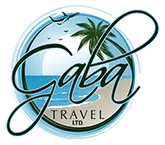Have you ever dreamed of a European backpacking trip? It seems like the perfect travel destination; countless world-famous sites, historical old cities, and dozens of nations packed together on one small, manageable continent. Exploring Europe by train is an immensely popular travel method; many movies and books show people backpacking through Europe without a plan, hopping onto the train whenever they choose, arriving in a new country less than a day later. For those who love spontaneity and adventure, this arrangement seems almost too good to be true, especially compared to the slow and sparse train system we enjoy in North America.

Image source: telegraph.co.uk
Europe has many different railway companies, both local and cross boundary. Luckily, one can buy a Eurail pass which allows you to travel on most of these trains included in the cost of the ticket (the UK is one glaring exception).
There are several options when you purchase a Eurail pass. The one with the most freedom is the Global pass, with rail access to 28 countries in Europe. If you want to keep your travels more local, you can choose a Select pass, which includes 4 bordering countries of your choice (the Select pass between Italy and Greece includes a ferry ticket) or a single-country pass (this is especially useful in large countries such as France, Germany, and Spain).
However, in recent years, many young travelers are opting for Europe’s many discount airlines rather than rail for their travel needs. Which method of travel is right for you? Let’s explore the pros and cons of European Rail Travel:

image source: National Geographic
Pros of Eurail Travel
- Spontaneity: With an unlimited Eurail pass, you can hop on a train to a new country and the ticket has already been paid for. While it may be cheaper to fly between countries on one of the continent’s many discount airlines, cheap tickets often need to be booked well in advance and are a bit more expensive if you book them one day to the next.
- No airport hassles: As much as you may love to travel, we can all agree that airports are no fun. Arriving hours before your flight, taking off your shoes and jacket before slogging through security, and unexpected flight delays are all things that take away from the ease and convenience of air travel. One of the best parts about European rail travel is that you can simply arrive at the train station, show them your ticket, and hop on the train. Another benefit is that Europe has many historically significant train stations with beautiful architecture, which certainly will add to the charm of your trip.

image source: blog.planeandtrain.com
- Time*: In North America, rail travel is considered to be the slower, more scenic route. A train between Seattle and Vancouver is a five hour journey, whereas the drive is only three hours. The train between Montreal and New York is a whopping eleven hours, and only runs once a day. In Europe, however, the trains have both high-speed and local speed options. In six and a half hours, you can take a high speed train from Paris to Northern Italy.
Cons of Eurail:
- Cost: Prices on Eurail can be a bit tricky to calculate. You can opt for a certain amount of rail travel days within a set period of time, for example 10 travel days within 2 months, or you can opt for a “continuous” pass, which means unlimited travel days that span between 15 days and 3 months. The continuous tickets seem attractive because they eliminate the need to calculate and ration your travel days, but are a bit more expensive and may make you feel obligated to hop on a train every other day, rather than taking the time to explore the city or region you are staying in. If you are looking to save money, rail passes may require more planning than you initially thought. However, if you are willing to throw down the cash for a continuous pass, you only have to pay once.
- Time*: When you are traveling between countries that are all close together, for example France, Brussels, and the Netherlands, rail travel just makes sense. However, when you want to traverse the continent from the Atlantic to the Mediterranean, it can be hard to justify a 20-hour or more train trip.
*Note how time is both in the pro and con sections of this article. Whether or not it is a pro or con for you depends on your own trip!

image source: dailymail.co.uk
Enjoy your European adventure, no matter how you travel.









